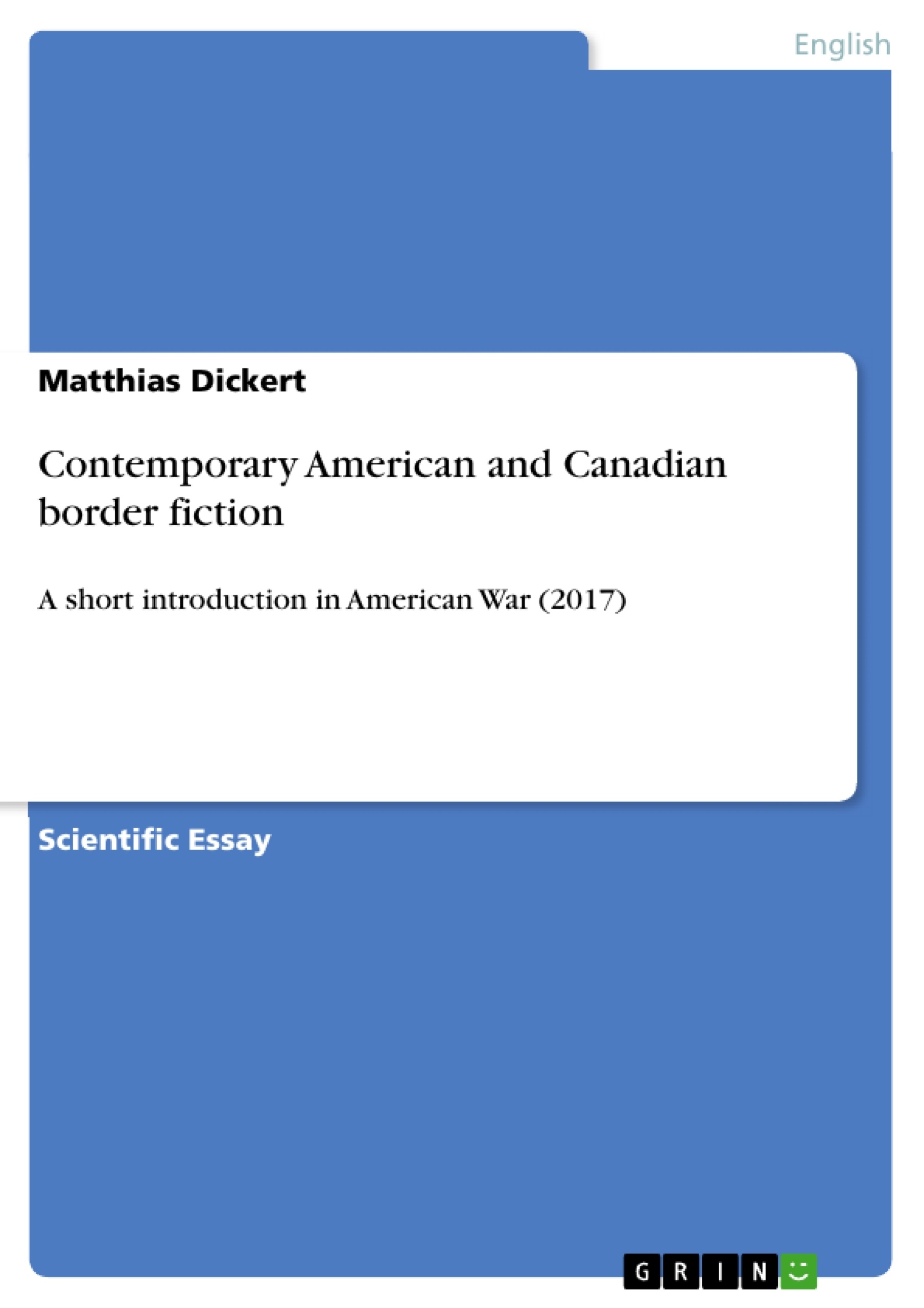The traditional literary coverage of border and frontier in American and Canadian literature has always been closely linked to war, survival, trauma, trauma time, immigration as well as exile and has re-gained interest of many contemporary writers and critics after 9/11.
Since that date both terms have been discussed on a collective, national or individual level thus throwing light on the manifold consequences of this new interpretation of the complex term border which is of special interest here.
The literary dealing with border and its consequences in El Akkad's novel American War (2017) must yet be seen in a close relationship between border and war. The incorporation of war into English speaking literature itself has a long tradition since wars as such form ideal literary backgrounds for plot, character development or political criticism. In times of civil uproar, political insecurity, outer enemies or ongoing wars this incorporation of war as a literary means has always been present. This is recently perhaps best shown by the events of 9/11. They have not only taken American literature out from its long involvement in local matters such as family, village or town but pushed it into new directions which formed completely new types of novels such as the 9/11 Novel, the post-9/11 Novel or Ground Zero Fiction where war gained a new dimension which is so different from war literature of the First World War, the Second World War or the Vietnam War.
In many cases this literary coverage of 9/11 has mostly remained in American families or matters and it lacked an appropriate coverage of foreign perspectives.
EI Akkad's novel American War (2017) exactly fits into this background not only because it is written by an author originating from a Muslim background it also brings the topic war back to America to discuss it here. This is new and radical in the sense that readers suddenly are confronted with problems such as war, terrorism, suicide bombers or chemical warfare which so far have been placed on foreign battlegrounds.
El Akkad combines two main trends of Muslim writing which are characterized by bringing the narration into the West or by taking it back into the former colonies. By choosing a civil war as the setting for his novel he mixes both trends while importing terror back to the USA which is to blame for it.
Inhaltsverzeichnis (Table of Contents)
- Prologue
- Abstract
- I. Introduction
- II. American and English War Literature – a short Survey
- 36a
- 9
- III. Border Fiction
- a short Survey
- IV. Border and Borderline in the face of 9/11
- V. The literary background of American War or the American South
- as a Border
- VI. Conclusion
- VII. Outlook
- Epilogue
- VIII. Bibliography
Zielsetzung und Themenschwerpunkte (Objectives and Key Themes)
This critical essay explores the intersection of border fiction and war in contemporary American and Canadian literature, particularly focusing on Omar El Akkad's novel "American War" (2017). The essay examines the novel's unique depiction of a civil war in the United States, its connection to the "9/11 Novel," and the broader themes of border, war, and trauma in contemporary literary discourse.
- The evolving role of "border" and "frontier" in American and Canadian literature, particularly in the context of war, trauma, and immigration.
- The impact of 9/11 on the perception and representation of "border" and its consequences in literature.
- The unique portrayal of war in "American War," combining traditional and contemporary concepts of warfare, including "hybrid war."
- The novel's exploration of the consequences of war on American society and its critique of the United States' role in global conflict.
- The significance of "American War" as a representative of contemporary English-speaking literature, incorporating elements of speculative fiction, dystopian settings, and narratives of environmental catastrophe.
Zusammenfassung der Kapitel (Chapter Summaries)
The essay begins with a prologue that sets the stage for the discussion of border and war in American literature. The abstract introduces the main themes and focus of the essay, highlighting the novel "American War" and its relevance to the contemporary literary context. The introductory chapter provides a broad overview of border and frontier in American and Canadian literature, examining its historical development and connection to themes of war, survival, and trauma.
Subsequent chapters delve into the specific aspects of border and war, focusing on the impact of 9/11 and the rise of the "9/11 Novel." The essay then analyzes the literary background of "American War," exploring its setting in the American South and its connection to broader themes of border and conflict. The essay concludes with a chapter dedicated to the themes and significance of "American War" as a representative of contemporary English-speaking literature.
Schlüsselwörter (Keywords)
The essay focuses on the keywords "border," "frontier," "war," "trauma," "immigration," "9/11," "American War," "hybrid war," "speculative fiction," "dystopian," "environmental catastrophe," and "contemporary English-speaking literature."
- Quote paper
- Dr. Matthias Dickert (Author), 2018, Contemporary American and Canadian border fiction, Munich, GRIN Verlag, https://www.grin.com/document/449794



